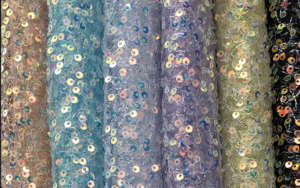Satin fabric has long been a symbol of luxury in the fashion world. From red-carpet gowns to bridal veils, its signature sheen and soft drape make it a top choice for designers and retailers aiming to captivate customers.
But what exactly makes satin so versatile, and how can you source the best quality for your business?
This guide will give you a detailed overview of satin fabrics so you can make an informed choice for your clothing brand.
What is Satin Fabric?
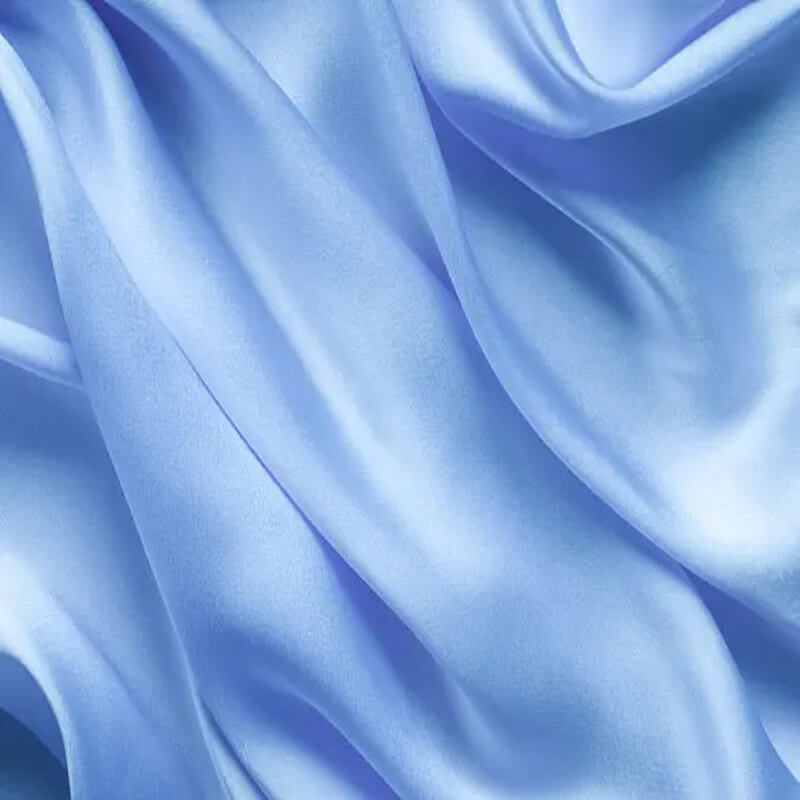
Satin is not a material but a weaving technique that creates a glossy front and a dull back. This unique structure uses a “satin weave,” where warp threads float over multiple weft threads (e.g., 4:1 or 7:1 ratio), minimizing interlacing points. The result? A smooth, lustrous surface that catches light beautifully.
Key Characteristics :
Lustrous Finish: Ideal for designs requiring a luxurious sheen.
Soft Drape: Flows effortlessly, perfect for fluid garments like dresses and scarves.
Durability: It depends on fiber content. Polyester satin resists wrinkles, while silk satin is delicate but premium.
Key point: Many confuse satin with silk. While silk is a natural fiber, satin refers to the weave. Satin can be made from silk, polyester, nylon, or blends.
A Brief History of Satin
Satin originated in medieval China, where silk was woven into glossy fabrics for royalty. By the 14th century, it spread to Europe via the Silk Road, becoming a staple for aristocratic robes.
The Industrial Revolution democratized satin. Synthetic fibers like polyester (introduced in the 1940s) made satin affordable for mass-market fashion. Today, it’s used in everything from clothing to pillowcases
Satin Materials
In a satin weave, 4-8 warp threads “float” over one weft thread (or vice versa), reducing friction and enhancing shine. The higher the float count, the glossier the fabric—but also more prone to snagging.
Common Materials
| Type | Pros | Cons | Best For |
| Silk Satin | Natural, breathable | Expensive, delicate | Luxury apparel |
| Polyester Satin | Affordable, durable | Less breathable | Fast fashion, decor |
| Nylon Satin | Resilient, and has a smooth finish | Slightly stiffer than polyester satin | Sportswear or outerwear |
| Acetate Satin | Soft with a moderate sheen | non-durable | Linings, evening wear, |
| Blended | Balanced cost/quality | Varies by blend ratio | Mid-range collections |
Types of Satin Fabric
Charmeuse satin
- Composition: Can be made from silk, polyester, or other synthetic fibers.
- Characteristics: Lightweight with a glossy front and a slightly matte back; excellent drape and fluid movement.
- Uses: Lingerie, blouses, dresses, and scarves.
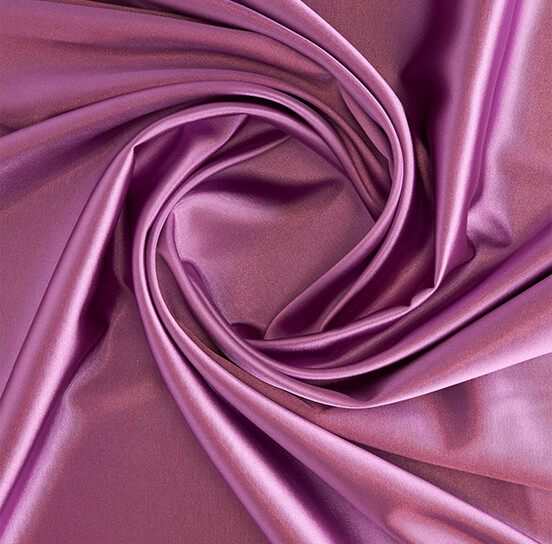
Duchess Satin
- Composition: Typically made from silk or high-quality synthetic blends.
- Characteristics: Heavier (120+ GSM) is more structured than charmeuse; it features a high gloss on the face and a matte back.
- Uses: Formal wear such as wedding gowns and evening dresses where structure and opulence are important

Antique Satin
- Composition: Antique Satin can be made from various fibers such as silk, polyester, or blends.
- Characteristics: Matte finish with slight texture for vintage-inspired designs.
- Uses: Vintage clothing or upholstery
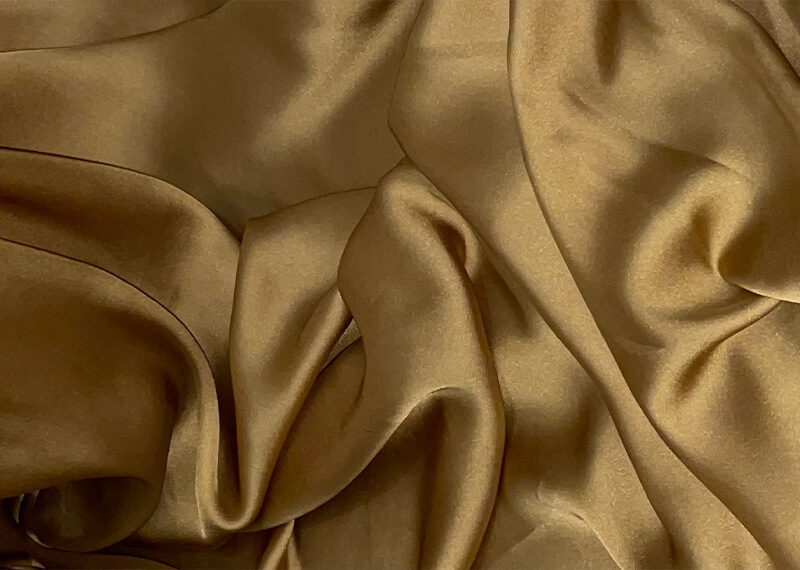
Crepe-Back Satin
- Composition: Often made from polyester or silk blends
- Characteristics: Has a smooth, shiny face with a crepe-textured reverse side, providing a unique contrast in texture.
- Uses: Dresses, skirts, and other garments where a combination of sheen and texture is desired.
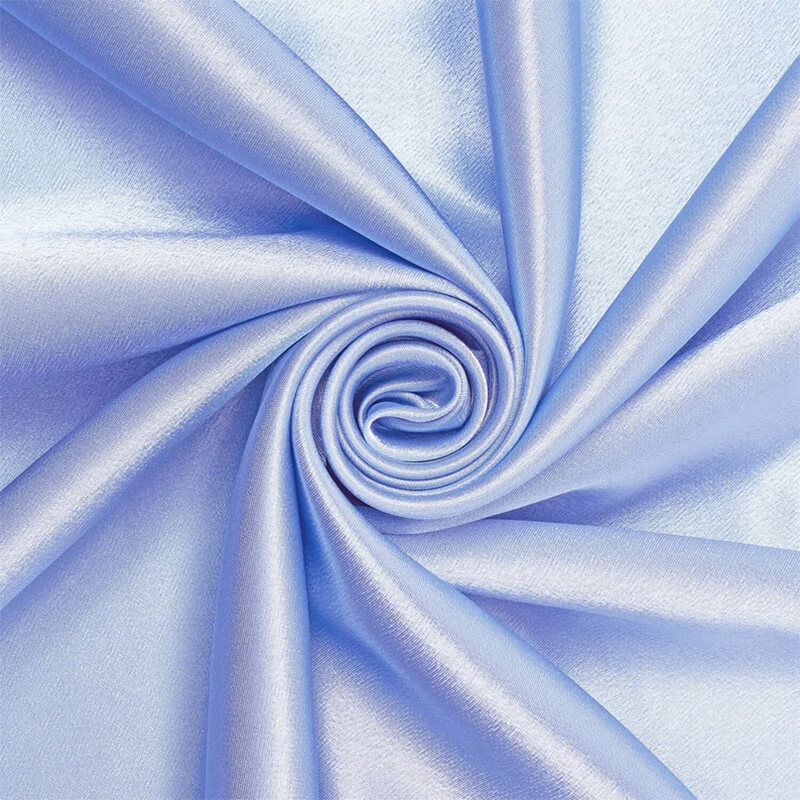
Uses of Satin Fabric
Satin is a fabric that instantly transforms any garment, making it the go-to choice for designers creating glamorous, high-fashion pieces.
- Evening Wear: Satin is a classic choice for evening gowns, cocktail dresses, and other formalwear.
- Bridal Wear: Satin is a popular fabric for wedding gowns, especially those designed for formal or traditional weddings.
- Lingerie: Satin’s smooth texture makes it ideal for lingerie, as it feels soft against the skin.
- Accessories: Satin is also used in a variety of accessories, from scarves and headbands to handbags and shoes.
- Home Decor: Beyond clothing, satin is frequently used for curtains, pillows, bed linens, and other home textiles.

Caring for Satin Fabric
Share these tips with your customers to build trust:
Wash: Handwash in cold water with mild detergent. Avoid wringing.
Dry: Lay flat or hang; never machine-dry.
Store: Fold with acid-free tissue to prevent creases.
FAQs About Satin Fabric
Q: Is satin breathable?
A: Silk satin is breathable; polyester traps heat. Choose based on the target climate.
Q: Can satin be ironed?
A: Yes—use low heat and a pressing cloth to avoid scorching.
Q: Satin vs. Sateen—what’s the difference?
A: Sateen is a cotton weave with a similar sheen but lacks satin’s smoothness. Sateen is popular in bedding and casual wear.
Conclusion
Satin’s timeless allure makes it a powerhouse fabric for fashion businesses. Whether you’re a high-end clothing brand or a designer crafting a luxury collection, understanding satin’s nuances ensures you deliver what the market craves.

